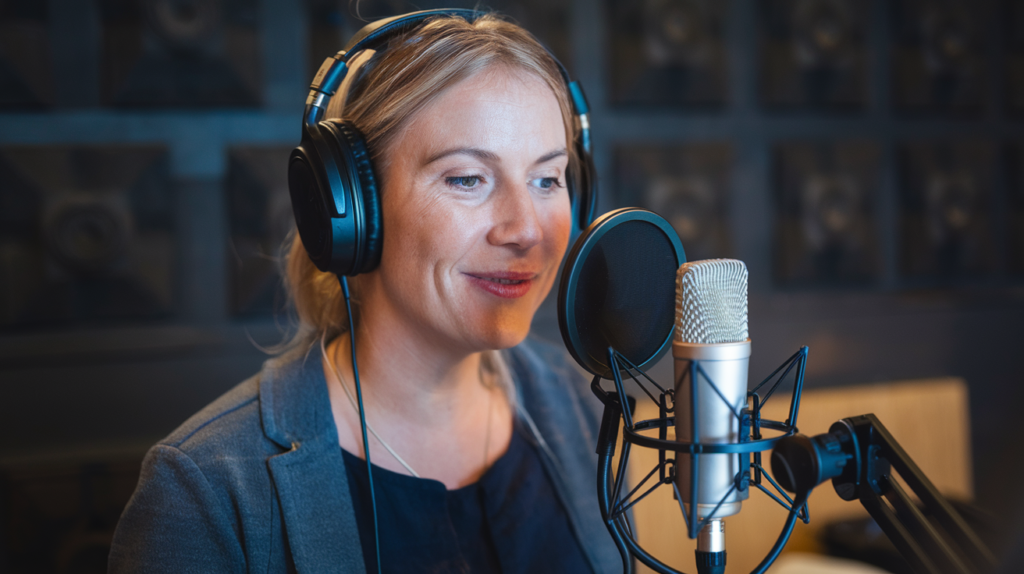Key Takeaways
- Cultural Sensitivity: Understanding New Zealand’s diverse accents and cultural nuances is crucial for authentic voice performances that resonate with audiences.
- Building Trust: Establishing strong relationships with voice actors fosters creativity and encourages open communication, leading to better performances.
- Effective Feedback: Providing clear, constructive feedback helps guide voice talent while maintaining morale and encouraging growth.
- Encouraging Collaboration: Inviting creative input from voice actors can enhance the project’s depth, allowing for unique interpretations that elevate the final product.
- Navigating Challenges: Directors must be aware of technical limitations and address cultural differences to ensure high-quality audio captures without compromising artistic integrity.
Ever wondered how to get the best performances from voice actors in New Zealand? Directing these talented individuals can be a unique challenge, especially with the vibrant local culture and diverse accents. Whether you’re an aspiring director or a seasoned pro, understanding the nuances of this art form is crucial for success.
In New Zealand, voice acting isn’t just about reading lines; it’s about capturing emotion and authenticity. You’ll need to connect with your actors on a deeper level to bring out their full potential. So let’s dive into effective techniques that will not only enhance your directing skills but also elevate your projects to new heights. With the right approach, you’ll create captivating audio experiences that resonate with audiences everywhere.
Overview of Voice Acting in New Zealand
Voice acting in New Zealand thrives on a rich blend of cultural influences and unique accents. The country boasts a vibrant pool of voice talent, including skilled voice artists and seasoned voice actors. This diversity not only enhances the quality of voiceovers but also allows projects to resonate with both local and international audiences.
New Zealand’s distinct sound helps create authentic narratives. Whether it’s for animation, commercials, or audiobooks, the ability to capture emotion through vocal performance is crucial. Voice over talent here often undergoes rigorous training, honing their skills to deliver compelling performances that engage listeners.
You might be surprised by how many genres benefit from talented voice artists. From dramatic storytelling to light-hearted advertising spots, each requires a different approach and style. Directors focusing on these nuances can elevate their projects significantly.
Directing voice actors effectively involves understanding their strengths and guiding them to explore various interpretations of the script. Providing constructive feedback fosters an environment where creativity flourishes, enabling artists to connect deeply with their characters. With the right direction, the results can be truly captivating.
By leveraging local expertise and embracing New Zealand’s unique characteristics, you enhance your project’s potential for success in the competitive audio landscape.
Key Considerations for Directing
Directing voice actors requires a blend of skill and intuition. Understanding their unique talents and how to guide them effectively makes a significant difference in the final product.
Understanding the Voice Acting Process
Understanding the voice acting process involves recognizing that each voice actor brings distinct strengths to the table. You’ll want to familiarize yourself with their previous work, noting vocal styles and emotional ranges. Provide clear direction on character motivations, tone, and pacing during sessions. Encourage experimentation with different interpretations of lines; this often reveals unexpected gems that enhance your project’s depth. Keep in mind that effective communication about script nuances can lead to performances that resonate more deeply with audiences.
Building Relationships with Voice Actors
Building relationships with voice actors fosters trust and creativity. Establish an open dialogue where they feel comfortable sharing ideas or concerns. Acknowledge their expertise as voice talent; this recognition often inspires them to deliver their best work. Scheduling regular feedback sessions helps maintain momentum while reinforcing a collaborative atmosphere. Take time after recordings to discuss what worked well and areas for improvement—this not only strengthens connections but also enhances future performances.
By focusing on these key considerations, you’ll create an environment where voice artists thrive, enabling you to achieve impactful results in your audio projects.
Techniques for Effective Direction
Effective direction in voice acting requires a thoughtful approach that maximizes the potential of your voice actors. Understanding their unique talents and providing support fosters creativity and delivers impactful performances.
Providing Clear Feedback
Clear feedback is essential for guiding voice artists toward the desired outcome. Specify what works well and what doesn’t, using examples from the script to illustrate your points. Be direct yet positive; highlight strengths before addressing areas for improvement. This balanced approach encourages growth and keeps morale high among voice talent. Utilize specific terminology related to performance aspects such as pacing, tone, and emotional delivery. When feedback feels constructive rather than critical, you’ll see increased engagement from your voice actors.
Encouraging Creative Input
Encouraging creative input invites voice actors to contribute their interpretations, enhancing the overall project quality. Ask open-ended questions about character motivations or scene emotions to spark discussion. Allowing room for improvisation can lead to unexpected gems that elevate your production’s authenticity. Your role as a director isn’t just about control; it’s also about collaboration. Embrace the diverse perspectives of your voice talent, recognizing that their insights can bring fresh energy into the work.
By applying these techniques, you create an environment where voice artists thrive, ultimately leading to richer audio projects that resonate with audiences.
Challenges in Directing Voice Actors
Directing voice actors comes with unique challenges that require skill and sensitivity. Understanding these obstacles can lead to more effective collaboration and exceptional performances.
Navigating Cultural Nuances
Navigating cultural nuances is essential when working with voice talent in New Zealand. Different regions bring diverse accents and expressions, which may impact how a script resonates with listeners. As a director, you must appreciate the local culture to guide voice artists effectively. Listening attentively to how they interpret character motivations can reveal insights into their backgrounds and experiences. Embracing this diversity enriches your project while ensuring authenticity in the final product.
Handling Technical Limitations
Handling technical limitations is another significant challenge in directing voice actors. Equipment quality, recording environments, and software capabilities can influence sound clarity. You need to ensure that your setup meets professional standards for capturing high-quality audio; otherwise, even the best performances may fall flat due to poor production values. Additionally, understanding the technical aspects allows you to communicate better with your voice over talent about what’s feasible during recording sessions. Being proactive helps minimize issues that could disrupt the creative process or compromise artistic integrity.
By tackling these challenges head-on, you create an environment where voice artists feel supported and empowered, leading to remarkable outcomes that engage audiences effectively.
Conclusion
Directing voice actors in New Zealand presents unique challenges and rewarding opportunities. By embracing the rich cultural landscape and diverse talent, you can elevate your projects to new heights. Remember that effective communication and a supportive environment are key to unlocking the full potential of voice artists.
Fostering creativity through collaboration allows for authentic performances that truly resonate with audiences. As you navigate the nuances of directing, keep an open mind and be willing to adapt your approach based on each actor’s strengths. With these insights, you’ll not only enhance the quality of your audio projects but also contribute to a vibrant creative community in New Zealand.
Frequently Asked Questions
What are the main challenges in directing voice actors in New Zealand?
Directing voice actors in New Zealand involves understanding diverse accents, cultural nuances, and technical limitations. Directors must navigate these elements to ensure authenticity and quality in audio projects. Challenges include recognizing each actor’s unique strengths while maintaining high standards for performance.
How can directors enhance their skills when working with voice actors?
Directors can enhance their skills by building strong relationships with voice actors, providing clear feedback, and encouraging creative input. Understanding character motivations and allowing room for improvisation fosters collaboration and leads to richer performances that resonate with audiences.
Why is training important for voice artists?
Training helps voice artists develop techniques to deliver authentic performances that capture emotions effectively. It equips them with the necessary skills to interpret scripts creatively, ensuring they meet industry standards for various projects like animation, commercials, and audiobooks.
How do cultural influences affect voice acting in New Zealand?
New Zealand’s rich blend of cultures contributes to its unique accents and expressions. This diversity enriches the pool of talent available for voice acting, allowing directors to create more engaging audio experiences that reflect local authenticity.
What techniques can improve the quality of audio projects?
Effective feedback is crucial; it should highlight strengths while addressing areas for improvement. Encouraging experimentation and inviting creative input from voice actors creates an environment where they feel valued, leading to more authentic performances that engage audiences better.







